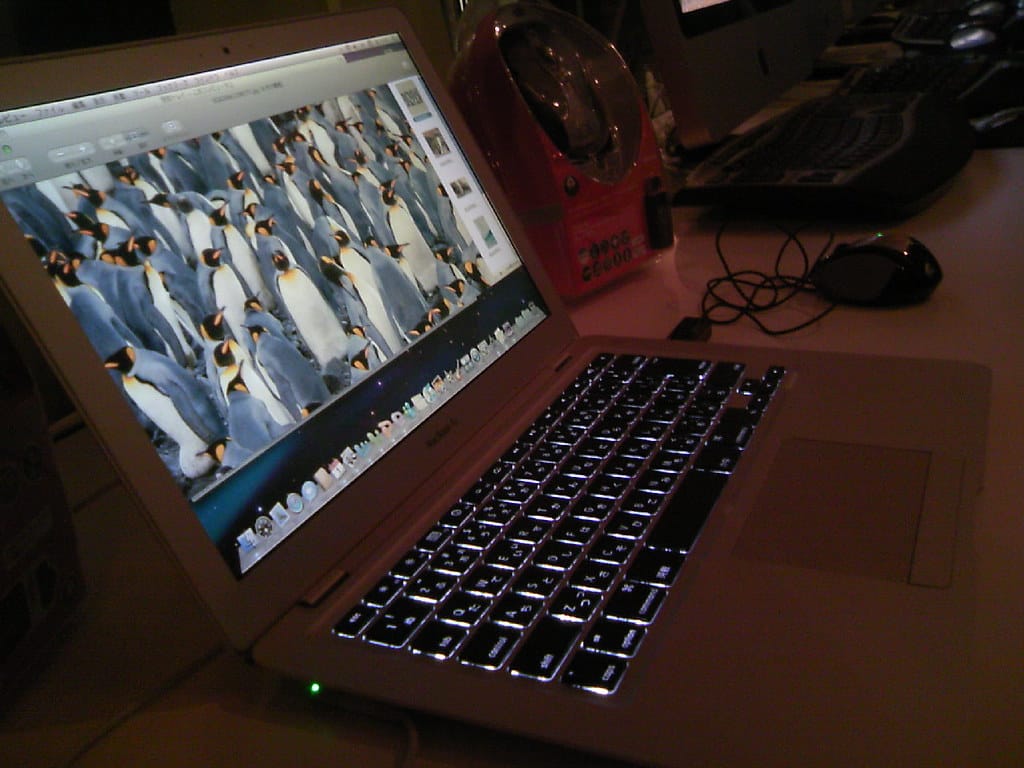The MacBook Air's Identity Crisis: Why Apple's Most Popular Laptop Lost Its Way in the Intel Twilight
The MacBook Air, once Apple's crown jewel of portable computing, finds itself in an awkward position as the company phases out its last Intel-powered machines. While other Mac models gracefully transitioned to Apple Silicon with clear improvements and defined roles, the Intel MacBook Air has become a confusing relic—overpriced, underpowered, and increasingly difficult to recommend in Apple's modern lineup.
The Rise and Fall of an Icon
When Steve Jobs pulled the original MacBook Air from a manila envelope in 2008, it revolutionized laptop design. For over a decade, the Air represented the perfect balance of portability, performance, and price for millions of users. It became Apple's best-selling Mac, powering everything from college dorm rooms to corporate boardrooms.
However, the 2020 arrival of Apple Silicon changed everything. The M1 MacBook Air delivered superior performance, better battery life, and ran cooler—all while maintaining the same $999 starting price. Suddenly, the Intel MacBook Air looked antiquated overnight.
A Lineup That No Longer Makes Sense
Today's Mac lineup reveals the Intel MacBook Air's problematic position. At $1,199, the Intel model costs $200 more than its M1 successor while delivering inferior performance across every metric. The M1 Air achieves up to 3.5x faster CPU performance and 5x better graphics performance, according to Apple's own benchmarks.
Even more damning, the Intel Air struggles with basic tasks that its Apple Silicon sibling handles effortlessly. Video calls drain its battery in under four hours, while the M1 Air lasts up to 15 hours. The Intel model's fan spins constantly under moderate workloads, while the M1 Air remains silent thanks to its fanless design.
Why Does It Still Exist?
The Intel MacBook Air's continued presence in Apple's lineup puzzles industry observers. Some speculate it exists solely for enterprise customers with legacy software requirements, but even this justification grows weaker as more applications receive native Apple Silicon support.
The more cynical interpretation suggests Apple maintains the Intel Air to make its Apple Silicon machines look better by comparison. By keeping a more expensive, less capable option on the shelf, the M1 and M2 MacBook Airs appear as exceptional values.
The Real Cost of Choosing Wrong
For consumers who unknowingly purchase the Intel MacBook Air, the consequences extend beyond initial disappointment. These machines will likely lose software support years before their Apple Silicon counterparts. Already, some developers have stopped optimizing for Intel Macs, focusing their efforts on Apple Silicon optimization.
The resale value tells another stark story. Intel MacBook Airs depreciate rapidly, while M1 models retain their value remarkably well. A quick search on refurbished sites shows Intel Airs selling for 40-50% less than comparable M1 models, despite similar original prices.
Looking Ahead: The End of an Era
Apple's transition to Apple Silicon represents one of the most successful platform migrations in computing history. Every Mac that moved to Apple's chips emerged better for it—except the MacBook Air, which became a victim of its own success.
As Apple prepares to end Intel Mac sales entirely, the MacBook Air stands as a cautionary tale about technological transitions. It reminds us that even the most successful products can quickly become obsolete when paradigm shifts occur.
The Verdict
The Intel MacBook Air's story is ultimately one of timing and transition. It's not a bad computer—it's simply been surpassed so thoroughly that its continued existence serves no purpose except to confuse buyers and tarnish the Air's sterling reputation.
For anyone considering a MacBook Air today, the choice is clear: avoid the Intel model entirely. The M1 and M2 MacBook Airs offer superior performance, better battery life, and longer software support at lower prices. The Intel MacBook Air may have once been the obvious choice for most users, but today it's the obvious loser in Apple's lineup.
As the sun sets on the Intel Mac era, perhaps it's time for Apple to finally let this confused machine rest in peace.
SEO Excerpt: The Intel MacBook Air struggles to justify its existence as Apple transitions to Apple Silicon. With inferior performance, shorter battery life, and a higher price than its M1 successor, it has become the obvious loser in Apple's modern lineup.
SEO Tags: MacBook Air, Intel Mac, Apple Silicon, M1 MacBook Air, Apple transition, laptop comparison, Mac buying guide, Intel vs M1, Apple computers, MacBook review
Suggested Illustrations:
- Hero Image (Top of post): Side-by-side comparison photo of Intel MacBook Air and M1 MacBook Air
- Placement: After headline
- Description: Two MacBook Airs open at similar angles, with performance metrics overlaid
- Generation prompt: "Two MacBook Air laptops side by side on a clean desk, one labeled 'Intel' with a red downward arrow, one labeled 'M1' with a green upward arrow, minimalist style, professional product photography"
- Performance Chart (After "A Lineup That No Longer Makes Sense")
- Placement: Mid-article
- Description: Bar chart comparing CPU, GPU, and battery life between Intel and M1 MacBook Air
- URL: Create custom infographic showing performance differences
- Timeline Graphic (After "Looking Ahead: The End of an Era")
- Placement: Lower third of article
- Description: Visual timeline showing MacBook Air evolution from 2008 to present
- Generation prompt: "Minimalist timeline graphic showing MacBook Air evolution, highlighting 2008 launch, 2020 M1 transition, modern style with Apple aesthetic"
Target Audience: Tech-savvy consumers, potential Mac buyers, current Intel Mac owners, IT decision-makers, Apple enthusiasts, and technology journalists interested in Apple's platform transition.
